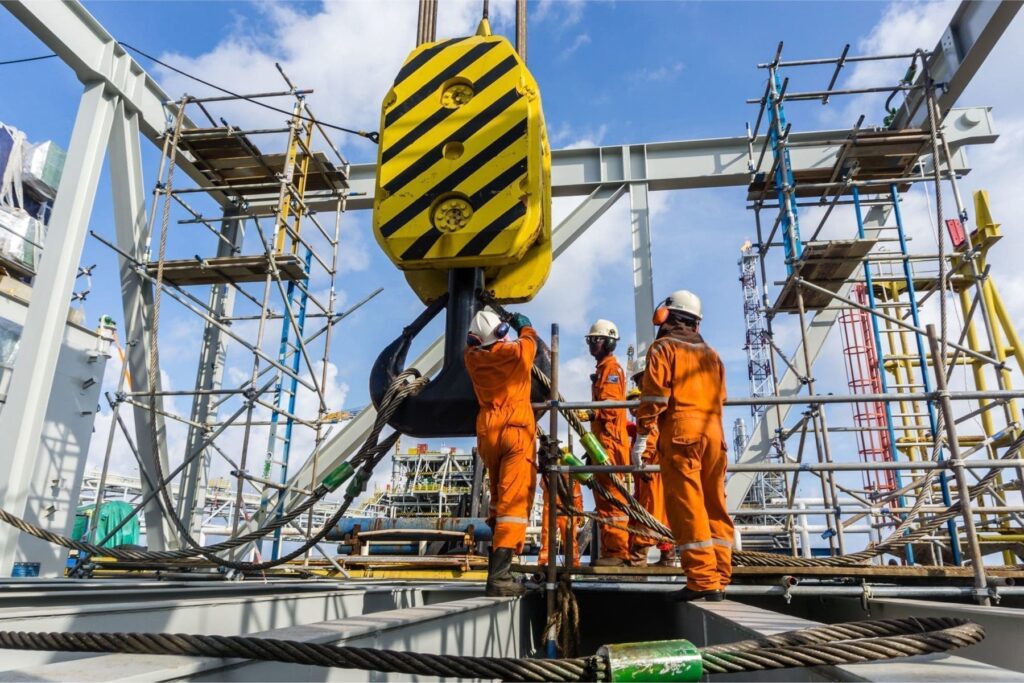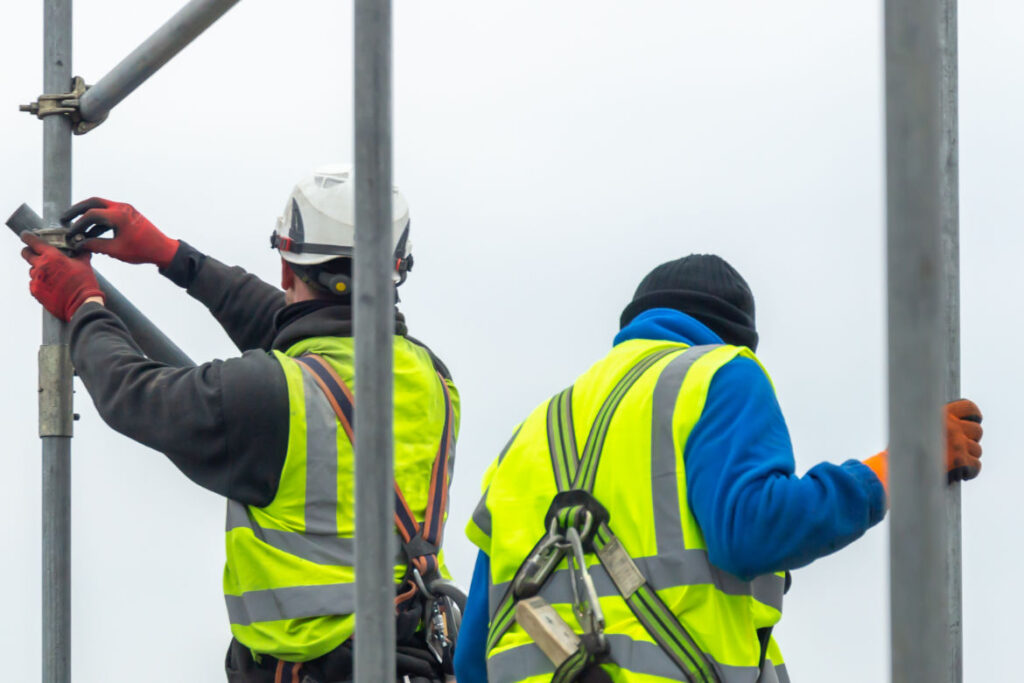Engineered timber products, particularly Laminated Veneer Lumber (LVL), have gained significant traction in the construction industry due to their strength, versatility, and sustainability. For site managers overseeing projects that incorporate LVL, understanding the intricacies of this material is essential. This article offers practical tips to help site managers effectively utilise LVL in their projects, ensuring optimal results and smooth operations.
Understanding LVL: An Overview
Before diving into practical tips, it’s crucial to understand what LVL is and why it has become a preferred choice in modern construction. LVL is created by bonding together thin layers of wood veneers with adhesives, resulting in a strong, stable product that can be used for beams, headers, and other structural applications.
Incorporating LVL construction projects offers numerous advantages, but it requires careful planning, execution, and ongoing management. By following the practical tips outlined in this article, site managers can effectively navigate the complexities of LVL construction, ensuring successful project outcomes.

The Benefits of LVL
One of the primary advantages of LVL is its high strength-to-weight ratio. This characteristic allows for longer spans and reduced material usage, which can lead to significant cost savings. Additionally, LVL is less prone to warping or splitting compared to traditional timber, making it a reliable choice for various applications.
Moreover, LVL is manufactured from sustainably sourced timber, aligning with the growing demand for environmentally friendly building materials. This makes it an excellent option for projects aiming for green certification. The production process of LVL also utilises advanced technology, ensuring that the end product meets stringent quality standards and performance criteria. This reliability not only enhances the structural integrity of buildings but also instils confidence in architects and builders alike.
Common Applications
LVL is commonly used in residential and commercial construction for beams, lintels, and floor joists. Its versatility allows it to be adapted for a variety of structural needs, making it a go-to material for many site managers. Understanding these applications can help in planning and executing projects more effectively. In addition to its structural uses, LVL can also be employed in the construction of curved or angled elements, providing designers with the flexibility to create innovative architectural features that were previously difficult to achieve with traditional materials.
Furthermore, LVL’s uniformity and predictability in performance make it an ideal choice for prefabricated construction methods. As the industry moves towards more modular building techniques, LVL’s consistent properties allow for precise engineering and manufacturing, which can significantly reduce on-site labour time and costs. This adaptability not only enhances efficiency but also contributes to the overall sustainability of construction projects, as it minimises waste and optimises resource use. Read more about efficiency on https://energyeducation.ca/encyclopedia/Efficiency
Planning for LVL Installation
Proper planning is critical when working with LVL. Site managers must consider several factors to ensure a successful installation process. This section outlines key planning considerations that can streamline the use of LVL in construction projects.

Assessing Load Requirements
Before selecting LVL for a project, it is essential to assess the load requirements. Different grades of LVL offer varying load capacities, so understanding the specific demands of the structure will guide appropriate material selection. Consulting with structural engineers can provide valuable insights into load calculations and necessary specifications.
Additionally, it’s important to consider future loads that may be applied to the structure. For instance, if the building will accommodate heavy machinery or additional floors in the future, it’s wise to account for these factors during the initial planning stages. This foresight can prevent costly modifications later on and ensure that the structure remains safe and functional over time. Moreover, understanding the environmental conditions, such as wind or seismic activity, can further influence the load requirements and the selection of LVL grades.
Site Preparation
Preparing the site for LVL installation involves ensuring that the foundation and framing are adequately prepared to support the material. This includes verifying that all structural components are level and square, as any discrepancies can lead to complications during installation.
Furthermore, site managers should ensure that all necessary tools and equipment are readily available. Having the right tools on hand can significantly reduce delays and improve overall efficiency during the installation process. Additionally, it is advisable to conduct a thorough inspection of the site to identify any potential hazards or obstacles that could impede progress. This might include checking for underground utilities, ensuring proper drainage to prevent water accumulation, and confirming that access routes for materials and machinery are clear. Such diligence not only enhances safety but also contributes to a smoother workflow, allowing the project to stay on schedule and within budget.
Installation Best Practices
Once planning is complete, the focus shifts to the installation of LVL. Adhering to best practices during this phase is vital to ensure structural integrity and longevity. Here are some practical tips for successful LVL installation.
Follow Manufacturer Guidelines
Each LVL product comes with specific manufacturer guidelines that outline installation procedures, load capacities, and other important information. Site managers should ensure that all team members are familiar with these guidelines to avoid potential issues during installation.
Moreover, following these guidelines can help in maintaining warranties and ensuring compliance with building codes. Ignoring manufacturer recommendations can lead to costly mistakes and structural failures. It is also wise to keep an open line of communication with the manufacturer, as they can provide valuable insights and support if any uncertainties arise during the installation process. Regularly reviewing the guidelines throughout the project can also help to reinforce best practices and ensure that the installation remains on track. Click here to find more about communication.
Utilise Proper Fastening Techniques
Using the correct fastening techniques is crucial when working with LVL. Site managers should ensure that all connections are made using appropriate fasteners, such as screws or bolts, as specified by the manufacturer. This not only enhances the structural integrity but also ensures that the LVL performs as intended.
Additionally, it’s important to avoid over-tightening fasteners, as this can lead to material damage. Training team members on proper fastening techniques can mitigate risks and enhance the overall quality of the installation. Furthermore, employing the right tools for fastening is equally important; using power tools that are calibrated for the specific fasteners can lead to a more efficient and effective installation. Regular maintenance of these tools will also ensure they function optimally, reducing the likelihood of errors that could compromise the structural integrity of the LVL.
Quality Control Measures
Implementing quality control measures throughout the LVL installation process is essential for maintaining high standards. Site managers should establish protocols to monitor the quality of materials and workmanship, ensuring that the final product meets all specifications. This proactive approach not only enhances the durability and safety of the structure but also fosters a culture of accountability among the installation team, where every member understands the importance of their role in achieving excellence.
Regular Inspections
Conducting regular inspections during the installation process can help identify potential issues early on. Site managers should schedule inspections at key stages of the project, ensuring that all components are installed correctly and in accordance with the design specifications. These inspections should be thorough, covering not just the visible aspects of the installation but also the underlying structural integrity. By employing a checklist tailored to the specific requirements of LVL installations, site managers can ensure that nothing is overlooked, thereby minimising the risk of future complications.
In addition to inspections, maintaining open communication with the installation team can facilitate the identification of any challenges that arise during the process. Addressing these challenges promptly can prevent delays and ensure a smoother workflow. Regular briefings and debriefings can be beneficial, allowing team members to share insights and experiences that may enhance the overall quality of the project. Encouraging a collaborative environment where feedback is welcomed can lead to innovative solutions and improvements in installation techniques.
Documentation and Reporting
Keeping thorough documentation of the installation process is vital for quality control. Site managers should maintain records of materials used, installation techniques, and any issues encountered during the project. This documentation can serve as a valuable reference for future projects and can assist in resolving any disputes that may arise. Furthermore, incorporating digital tools for documentation can streamline the process, making it easier to access and update records in real time. Such tools can also facilitate better data analysis, allowing for the identification of trends and recurring issues that may need to be addressed in future installations.
Moreover, comprehensive reporting at the conclusion of each phase of the project can provide insights into the effectiveness of the quality control measures in place. By analysing these reports, site managers can evaluate the performance of both materials and personnel, identifying areas for improvement. This reflective practice not only enhances future projects but also contributes to the professional development of the team, ensuring that lessons learned are effectively integrated into subsequent installations.
Post-Installation Considerations
Once the LVL installation is complete, there are several post-installation considerations that site managers should address. Ensuring that the structure is ready for occupancy and use is paramount.
Final Inspections and Testing
Conducting final inspections and testing is crucial to ensure that the structure meets all safety and performance standards. Site managers should collaborate with relevant authorities to schedule inspections and obtain necessary approvals before occupancy.
Testing for structural integrity, load-bearing capacity, and compliance with building codes is essential. Any deficiencies identified during these inspections should be addressed promptly to ensure the safety of the building’s occupants.
Maintenance Planning
Planning for ongoing maintenance is an often-overlooked aspect of LVL construction. Site managers should develop a maintenance schedule that outlines regular inspections and any necessary upkeep for the LVL components. This proactive approach can extend the lifespan of the structure and prevent costly repairs in the future.
Training and Development
Investing in training and development for the construction team is a critical component of successful LVL construction. Ensuring that all team members are knowledgeable about LVL and its applications can significantly enhance project outcomes.
Continuous Education
Encouraging continuous education through workshops, seminars, and training sessions can keep the team updated on the latest advancements in LVL technology and installation techniques. This investment in knowledge not only improves the quality of work but also fosters a culture of excellence within the team.
Moreover, staying informed about industry trends and best practices can help site managers make informed decisions that benefit their projects.
Encouraging Team Collaboration
Fostering a collaborative environment among team members can enhance communication and problem-solving. Site managers should encourage open dialogue and teamwork, allowing team members to share insights and experiences related to LVL construction.
Collaboration can lead to innovative solutions and improved efficiency, ultimately contributing to the success of the project.
Conclusion
From understanding the material and planning for installation to implementing quality control measures and investing in team development, each step plays a crucial role in maximising the benefits of LVL. With the right approach, site managers can lead their teams to achieve excellence in LVL construction, ultimately contributing to safer, more sustainable buildings.
